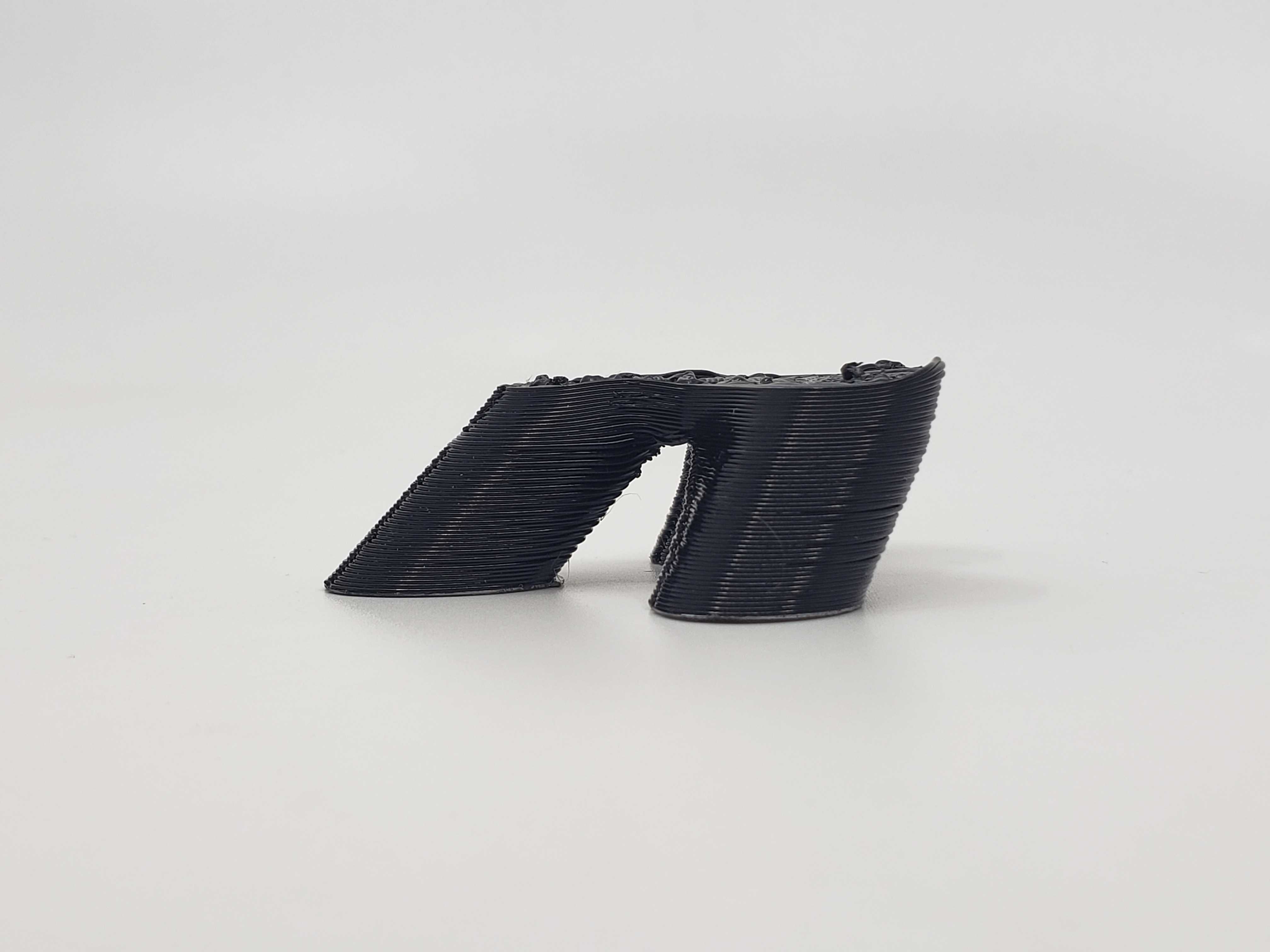AON3D Readyprint™ ESD ABS
AON3D Readyprint™ ESD ABS is an acrylonitrile butadiene styrene composite with carbon black to provide electrostatic discharge (ESD) on 3D printed parts. ESD ABS provides similar mechanical properties to baseline ABS with good impact resistance, low density, and printability. This composite polymer is typically used for parts that interface with electronic components such as housing for circuit boards or jigs and fixtures for electronics.
Printing Difficulty: Easy/Beginner
Readyprint™ ABS ESD can be purchased from AON3D directly by contacting help@aon3d.com.
- Moisture Control
- Build Platform Adhesion
- General Process Settings
- Post-Processing
- Troubleshooting & Best Practice
Moisture Control
Readyprint™ ABS ESD is factory pre-dried and should be installed in the Filament Dry Storage and Feed System prior to printing to prevent moisture uptake and minimize the impact of moisture on the printing process. In ambient air, ABS ESD is mildly susceptible to hydration. It will generally remain printable, but surface finish and seam quality will suffer after prolonged exposure.
If the filament is hydrated, dry filament at 80ºC for 4-6 hours in a convection oven. Ensure drying equipment respects our site requirements to ensure adequate drying performance is achieved. Store filament in air-tight bags or containers alongside silica or zeolite desiccant. Be sure to replace desiccant regularly as its moisture capture ability is exhausted.
For more information, see the Filament Drying and Moisture Control page.
Build Platform Adhesion
For instructions on how to inspect the AON3D build plates, refer to the Clean Build Platform and Build Chamber procedure for AON M2+ or the Inspect and Clean Build Plates procedure for AON-M2 and AON-M2 2020.
PEI Build Sheet
ABS ESD prints best on the PEI build sheet as it exhibits great adhesion behavior at moderate cost and improved durability over PC sheets. The PEI film is sensitive to Z offset calibration and thermal stability of the printer system. For best results, ensure that the machine has reached thermal equilibrium before calibrating. If the bed-to-nozzle distance is too small, or the first layer is too hot, the part may be difficult to remove without damaging the part and/or build sheet.
Garolite G-10 Build Sheet
ABS ESD prints well on the Garolite G-10 build sheet due to strong adhesion behavior while at recommended bed temperatures and clean removal once the build sheet is cooled down. The G-10 surface is sensitive to Z offset calibration and scratches or scuffs on the surface. For the best results, use a lower first layer speed, a higher the first layer extrusion temperature, and remove the parts gently after prints are complete to minimize damage on the build surface.
CF-PEEK Composite Plate
ABS ESD prints well on CF-PEEK Composite Plate build sheet as it exhibits great adhesion behavior while hot and clean removal after cooling down. The CF-PEEK composite plate is sensitive to Z offset calibration and thermal stability of the printer system. For best results, reduce the First Layer Speed, increase the first layer extrusion temperature, or increase bed temperature.
Caution: First layer extrusion temperatures in excess of 280ºC or elevated bed temperature selections can cause parts to permanently weld to the print surface.
General Process Settings
For best results, process settings should be adjusted based on a particular model geometry. If you require process development support, our Applications Engineering team can help! Send us a message at help@aon3d.com to consult with one of our Additive Manufacturing Specialists.
| Setting | AON M2+ |
|---|---|
| Extrusion Temperature | 250-270ºC |
| Bed Temperature | 90-100ºC |
| Chamber Temperature | 50-80ºC |
| Print Speed | 50-60 mm/s |
| Nozzle Size | 0.25-1.20 mm |
| Preferred Build Platform | PEI Build Sheet |
Composite material filaments are abrasive.
AON3D recommends using a Extruder Pro and a tungsten carbide nozzle to improve surface finish and reduce component wear. Contact the Customer Success team at help@aon3d.com to order the assembly.
Dual Extrusion and Support
Dual Extrusion Profiles and Standard Geometries for Readyprint™ ESD ABS coming soon.
Sample Slicer Profiles
SuperSlicer
All AON3D-validated materials are available in the SuperSlicer configuration bundle. Refer to SuperSlicer Installation and Update to install and update the SuperSlicer software. Follow the instructions to update to the latest version to ensure you have access to all available materials.
Simplify3D®
Simplify3D® sample profiles for Readyprint™ ABS ESD are available in the Downloadable Assets section.
Post-Processing
Allow all machine components to reach room temperature before proceeding further. Failure to allow components to cool down will result in thermal injury (burns) to personnel.
Parts removed before reaching room temperature have a chance of globally warping.
Troubleshooting & Best Practice
Overheating
ESD ABS is prone to overheating due to its low thermal conductivity and elevated ambient temperature of the printing chamber. Overheating typically presents as deformed part features, curling edges, loss of dimensional accuracy, and increasingly glossy part surface finish.
Risk of overheating increases as:
- part sizes fall below 30 mm x 30 mm cross-sectional areas.
- print speeds increase beyond 60-80 mm/s.
- chamber temperature is greater than 50ºC.
- chamber convection is turned off.
Nozzle size and part geometry will impact these rules of thumb.

Moderate reduction of chamber temperatures down to 50ºC can also have positive impacts on overheating. However, for large components (greater than 50 mm x 50 mm x 50 mm), warping effects may demand an elevated chamber temperature (>50ºC) selection.
For medium size cross sections (down to 10 mm x 10 mm), reduction of print speed (down to 40 mm/s) and extrusion temperature (down to 220ºC) can have a mitigating effect on overheating. For cross sections below 10 mm x 10 mm, tool contact with the print surface will dominate heating behavior. Introducing layer-to-layer dwell commands, or adding duplicate parts in the build, is the best way to manage heat accumulation in this case.